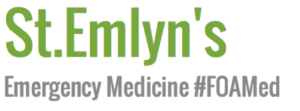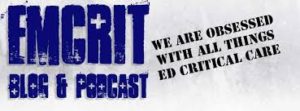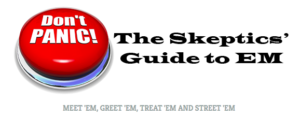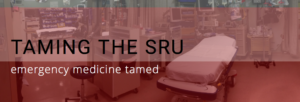Nursing FOAMed Review #6 (Oct 13th – Nov 1st)
Ryan Radecki shares his thought on Emergency Medicine Literature of Note about the PREMVA trial. Bacterial Vaginosis is associated with premature labor. So treatment of early-detected BV should result in fewer pre term deliveries right? Apparently not. The full text from the Lancet website can be found here. Whether this changes practices across EDs or not is doubtful – but blind, prospective RCTs that test dogma are important for just this reason. A great commentary by Radecki and why these seemingly simple trails have such an important place in EBM.
Dr. Skyler Lentz shares his thoughts on emDocs concerning emergency airway support for patients presenting with respiratory distress due to pneumonia. In short, this is a great discussion (linked with citations) about when to consider the use of NiPPV (Non invasive positive pressure ventilations, i.e. BiPAP, or CPAP), intubation or HFNC (high flow nasal cannula).
Dr. Lentz explains his thoughts concerning HFNC as the first airway intervention in certain patients presenting ot the ED with acute respiratory distress due to suspected non-complicated pneumonia. There is evidence seems to indicate that HFNC leads to a decreased mortality in this particular patient population. This may seem like splitting hairs, but for anyone who has watched a patient struggle against a BiPAP machine, the idea of being able to switch out NiPPV for HFNC seems like a fantastic idea.
emDocs also has this review on insulin as a treatment for hyperkalemia. Thank you Kayvan Moussavi, PharmD and Scott Fitter, PharmD for a really well put together article! At first glance this looks like a pretty simple paper discussing dosing recommendations – but read carefully and you’ll see some VERY cool pearls. My favorite part of this review is that it purports to give a range for potassium depletion with the typical 10 units of insulin dose that most ED nurses are familiar with. Expect a drop of 0.6 to 1.2 mEq/1h with your boilerplate 10-unit dose. I’ve been looking for that number for about 6 months – so I’m super happy to have that number handy. You’ll also find some great warnings about insulin dosing and rebound hypoglycemia – especially in the ESRD patient. Expect the potential for hypoglycemia up to 6 hours, YES 6 HOURS, after insulin administration; and the probability of that rebound hypoglycemia occurring rises in our patients with poor kidney function.
Owner and editor in chief of St. Emlyn’s, Dr. Simon Carley, writes about the prospects for learning, mentoring, and continuing education while working in a busy ED. Anyone who works in a busy environment should read this article. If you work in an inner city ED, or any level 1 Trauma, you probably feel pretty overwhelmed most of the time. Unsafe patient ratios, stacked hallways, and double-digit hour wait times are all normal. But how is it that most of us end up walking away from these experiences with an educational net gain. We find ways to make it work – and we innovate informal ways to help mentor and teach each other. Dr. Carley gives us some great advice in this article – and better than advice, he actually shares some of his teaching techniques that he feels are perfect for busy EDs. Read, share and repost. This is one of the most inspiring things I’ve read in a long time.
EMCrit has a great podcast with Zack Shinar and Scott Weingart about the science behind our cardiac arrest interventions. This is a wonderful review of some of the most cutting edge science behind our more advanced intervention options (VF storm arrest algorithms and ECPR) as well as a very thorough “rethinking” of our pre-hospital treatment options and prognostic guidelines. Listen if resuscitation is your thing. Maybe listen twice if it isn’t. Among the great discussion points in the podcast and EMCrit write up are:
- Pre-hospital prognostication guidelines
- How to think about “no-flow” and “low-flow” times
- Discussions of programs with up to 40% survival rates on initiated ECPR!
- Perhaps a new way of thinking about asystolic arrests in the ED?
- Cost of quality adjusted life year with ECPR (or any ECMO) vs. other extremely expensive interventions for other diseases. An interesting “rationalization” of the cost of ECPR in inner city EDs.
Howard Greller writes about huffing (dusting, sniffing, etc) in a new Tox and Hound installment on EMCrit. When I was still a medic I used to pick up a lot of obtunded kids that huffed Dust-Off or other inhalants. Some of them went into cardiac arrest. Interestingly, our protocol was always to call poison control (1-800-222-1222 – if you don’t have that number memorized … well, there you have it!) and every time, EVERY SINLGE TIME, I was told to administer benzodiazepines. That probably didn’t help much and this article explains why.
- If you know your patient was “dusting” your patient has a chance of going into sudden cardiac arrest – and if they haven’t died yet, make sure you don’t give them the opportunity to experience a sudden catecholamine surge.
- Your huffing patient is less of a respiratory patient and probably more of a high risk cardiac patient – they need to be kept on a cardiac monitor at all times!
- Beta Blockers or Amiodarone might be a better idea than a Benzo
Dr. Amy Chung on CanadiEM has an article reviewing the possible ED visits nurses may encounter related to irAEs. You don’t know what irAEs are? Well, that’s okay. I’d never heard of anything referred to as an “irAE” either. But I have heard a little about Immune Checkpoint Inhibitors. And I have heard the names of drugs referred to as biologics and immunologics like: ipilimumab, nivolumab, pembrolizumab, atezolizumab, durvalumab.
This is a review on the toxilogical events that can be caused by a group of drugs that are so new to oncology that they haven’t even made their way into our nursing pharmacology text books. Take a gander and walk away with some pretty good pearls:
- unlike chemotherapy, which targets and destroys cells, these drugs proliferate immunologic responses – toxic events are going to be treated the same as an autoimmune flare-up.
- take a look at the three different types of Immune Checkpoint Inhibitors – and maybe even memorize which ones are more likely to cause irAEs.
- the article has a great table of common presentations or irAEs and even a chart that grades of severity of common symptoms – along with guidelines for probable treatments.
Dr Lauren Westafer speaks on the SGEM about more medical dogmalysis. (Podcast Link Here) There has been a lot of talk in the FOAMed community recently about contrast CT and related AKI. Every ED nurse I know has had at least one experience where he/she has had to wait bedside for a creatinine blood result before transporting a severely ill patient for much needed CTA. Suspected stroke but no access? Wait for the creat before CTA. Other examples abound. But it looks like we have been waiting for nothing. SGEM#234 is here with a really fantastic review of the newest evidence against CTA associated AKI. It can all be summed up here with the SGEM’s bottom line: “The risk of AKI from CT contrast is not as great as it was thought to be, and it might not even exist. The risk of missed or delayed diagnosis likely outweighs any from the exposure in a patient who requires a contrast CT study.”
Listen to the SGEM – and then try to convince the radiologists that we don’t need to wait for the creat before CTA!
Just a fun thing here from Taming the SRU – how to make paperclip eyelid retractors. Patient can’t open his/her eye and you can’t touch the orbit or lid because of pain response? Need to get a good glance at that globe? Just follow these instructions and you’ll have eyelid retractors in no time. Little learned skills like these can save us time in already stretched-thin EDs. They can also decrease patient morbidity. While everyone else is running around trying to find the misplaced ring cutter, you could be the one using string (I use iodoform gauze) to take off that ring. These random skills have a valued place in any nurse practice.
Christina Shenvi and Leah Hatfield write in Emergency Physician Monthly about Kratom – AKA: Thang, Kakuam, Thom, Ketum, Krypton, Ketum and Thom, among others. Never heard of it? Me neither – but it is a legal drug of abuse and has effects similar to opioids at high doses. With the opioid crisis in full swing, and with Kratom being known “on the streets” as a legal option/drug that can alleviate opioid withdrawal, we may be seeing some Kratom patients in our EDs.
Dr Selim Rezaie gives us more ammunition in the fight against Tamiflu. He presents three different studies that tackle the efficacy of Tamiflu – and as you can probably guess, the results are underwhelming. So again – unless your patient is very old, or very immunocompromised (or maybe you think they’ll just really enjoy diarrhea on top of their typical flu symptoms) Tamiflu is probably not worth the cost of the drug. Tell that to Roche – the company has made more than $18 billion off Tamiflu since they released the drug in 1999.
